WAGO Ethernet cable (network)

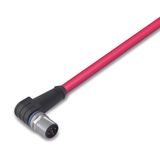

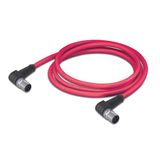







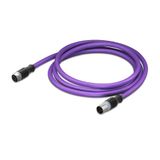
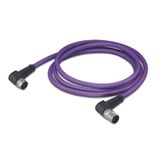




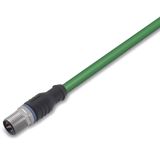
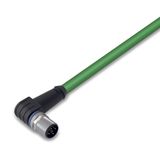



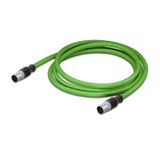
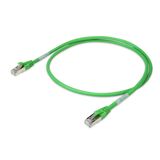
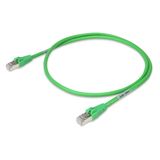











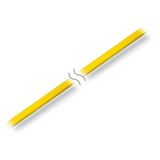






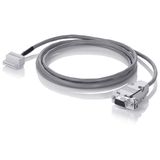












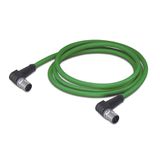



wago lan cables range for office and plant floors
wago lan cables cover the common horizontal runs you standardize across buildings: solid-conductor copper in Cat6 and Cat6A with U/UTP for quiet spaces and S/FTP where drives or UPS rooms add noise. Jackets come in LSZH for interiors and UV-resistant PE for exposed routes. Specify bend windows and bundle rules with wago lan cables so heat and insertion loss stay inside your acceptance margins.
wago computer network cables conductor classes and jackets
Factory pullers like the way wago computer network cables behave during dressing: round profiles, lubricious jackets that don’t stick in containment, and cores that sit straight in punch-down blocks. Choose LSZH where life-safety matters, and outdoor PE where ducts get damp. When a floor is PoE-heavy, call out conductor size and shield type within wago computer network cables to keep voltage drop predictable.
wago ethernet cables categories and EMC options
You get the usual mix with wago ethernet cables—Cat5e for legacy, Cat6 for office channels, Cat6A for multi-gig and high-power PoE—plus shielding options from unshielded to braid-plus-foil for harsh bays. Keep separation from mains where trays share space, and publish your bonding method so wago ethernet cables end in a clean 360° clamp at the panel.
wago patch cords lengths, strain relief, and color logic
At the rack, wago patch cords arrive in service lengths that match your layout, with snagless boots, molded strain relief, and print that survives cleaning. Color families let you mark uplinks, PoE, and OT segments at a glance. Use wago patch cords where you want factory-tested leads that won’t drift channel performance during moves or audits.
wago data transmission cables fiber backbones and trunks
Backbones live on fiber, and wago data transmission cables supply OS2 for distance and OM4 for dense switching rows. Choose LC for distribution and MPO/MTP for trunks when shutdown windows are short. In risers, tight-buffer builds suit indoor routes; in ducts, gel-free loose tube keeps pulling clean. Document wago data transmission cables with connector maps so spares are painless.
wago rj45 network wiring panels, keystones, and outlets
Closets stay tidy when wago rj45 network wiring pairs matched keystones, patch panels, and outlet modules. Field-terminable plugs help with MPTL to cameras and access points, while angled panels improve dressing in shallow racks. With wago rj45 network wiring, your punch-down tools, cages, and label carriers all line up, so techs don’t swap kits mid-shift.
wago structured network cabling zones and acceptance
Campus to desk, wago structured network cabling supports backbone, riser, and horizontal layers with clear zone boxes for churn-heavy areas. Write the test sheet once—limits, adapters, and required margins—and deploy it everywhere. With wago structured network cabling, your installers follow the same labeling and service-loop policy across every building.
Technical specifications and standards that matter
Copper categories aligned to ISO/IEC 11801 channels; shielding families from U/UTP through S/FTP; jackets in LSZH for interiors and PE for outdoors; minimum bend windows observed through outlets and panels; bonding via full-circle clamp hardware at entry plates; channel lengths and patching kept inside your documented budgets; acceptance with calibrated testers and exported result sets for handover.
Applications and compatibility
- Commercial floors: Cat6 horizontals in LSZH, angled panels to improve dressing, and color-coded equipment leads for quick tracing.
- Industrial zones: Cat6A with braid-plus-foil, outdoor PE in link corridors, and armored fiber between buildings.
- Education and healthcare: quiet trays with disciplined labeling, service loops above ceilings, and easy-read faceplates for audits.
Integration with other WAGO products
Door and rack hardware follows the same discipline you use on WAGO terminals: 360° shield bonds at gland plates, identifier carriers that match your print stock, and panel fittings sized to cable OD. Where HMIs or controllers live in the same cabinet, keep conductor classes and clamp ranges consistent so terminations feel identical to your rail work.
Selection criteria for B2B clients
- Pick the channel class choose Cat6 for office, Cat6A where multi-gig or high-power PoE is planned.
- Define the jacket and route LSZH for interiors, PE for ducts or exposed paths; confirm tray fill and bend policy.
- Set EMC and bonding choose shield type per zone and document 360° termination at entries.
- Decide device strategy outlet-to-patch for desks, MPTL for APs/cameras, pre-terminated trunks for tight windows.
- Lock test and labeling one tester profile, one labeling scheme, exported results tied to rack and outlet IDs.
Advantages of working with Bankoflamps
We operate on contractor-friendly terms: tailored B2B pricing with custom quotations and a dedicated account manager who learns your site standards. Expect quotes back in about an hour, with straightforward EAN/MPN ordering. The portal shows real-time stock across EU warehouses, live lead times and order status, plus downloadable price lists that stay current; purchase history and analytics help planning. Trusted accounts can use post-payment up to 30 days. We consolidate consignments to cut delivery costs, hold prices for defined validity periods, and support teams in France, the Baltics, Germany, Spain, Italy, Belgium, and the Netherlands.